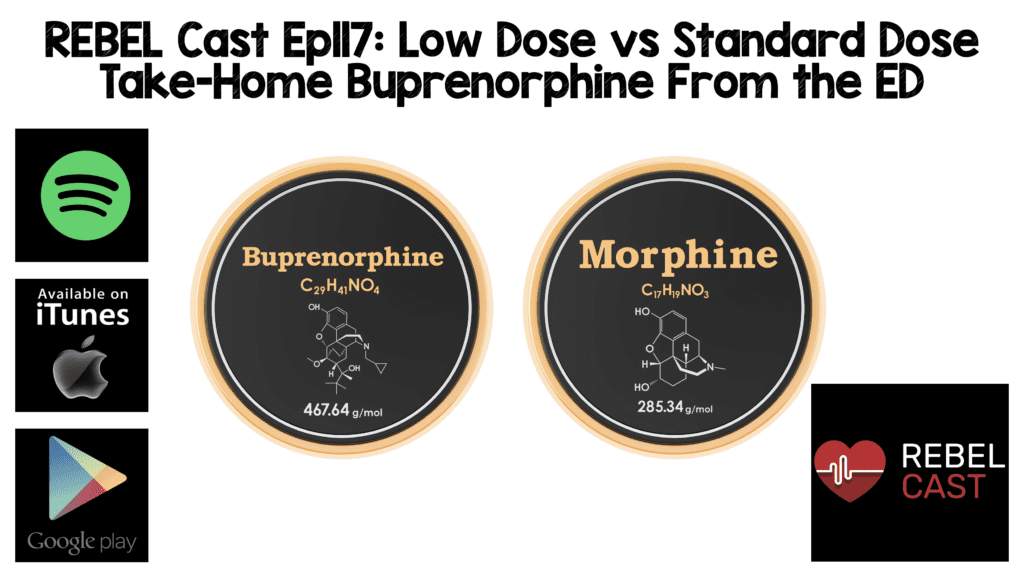
 Background Information: Opioid overdose deaths have been increasing in the past twenty years. The national number of overdose deaths from any opioid has increased 62.5% from 2019 to 2021 (from 48,000 to 81,400 annual deaths), which includes prescription opioids (natural and semi-synthetic opioids and methadone), heroin, and synthetic opioids other than methadone including fentanyl (1). Opioid use disorder treatments include methadone, a full mu-opioid receptor agonist, and buprenorphine, a partial agonist. Both methadone and buprenorphine have been proven to decrease morbidity and mortality in those with opioid use disorder. In the United States, methadone is only administered via a government-monitored opioid treatment program whereas buprenorphine is more accessible to patients. With the recent elimination of the DATA 2000 (the X-waiver) requirement, anyone with a DEA license can prescribe buprenorphine. In addition, buprenorphine has a lower risk of death from overdose when compared to methadone (2). It is also available in a variety of formulations for opioid use disorder including sublingual films, sublingual tablets, and a monthly extended-release injection (3).
Background Information: Opioid overdose deaths have been increasing in the past twenty years. The national number of overdose deaths from any opioid has increased 62.5% from 2019 to 2021 (from 48,000 to 81,400 annual deaths), which includes prescription opioids (natural and semi-synthetic opioids and methadone), heroin, and synthetic opioids other than methadone including fentanyl (1). Opioid use disorder treatments include methadone, a full mu-opioid receptor agonist, and buprenorphine, a partial agonist. Both methadone and buprenorphine have been proven to decrease morbidity and mortality in those with opioid use disorder. In the United States, methadone is only administered via a government-monitored opioid treatment program whereas buprenorphine is more accessible to patients. With the recent elimination of the DATA 2000 (the X-waiver) requirement, anyone with a DEA license can prescribe buprenorphine. In addition, buprenorphine has a lower risk of death from overdose when compared to methadone (2). It is also available in a variety of formulations for opioid use disorder including sublingual films, sublingual tablets, and a monthly extended-release injection (3).
One study from a county in Massachusetts found that of all nonfatal opioid doses seen in the emergency department from 2011-2015, 1 in 20 patients subsequently died within one year of initial visit with 66% of these deaths being directly related to an opioid overdose (4). These statistics make the ED a crucial treatment initiation point to prevent further morbidity and mortality from opioid overdoses. The benefit of accessibility, availability, and safety of buprenorphine compared to methadone makes it a viable option for opioid use disorder treatment initiation in the ED. Although buprenorphine is a partial agonist at mu opioid receptors, its binding affinity to these receptors is higher than full agonist opioids such as heroin, methadone, morphine, and fentanyl. As a result of this higher binding affinity, if present at the receptors together, buprenorphine out-competes lower affinity opioids resulting in precipitated withdrawal (3). Because of this, it is a common practice to only prescribe standard-dose buprenorphine when patients are experiencing moderate or severe withdrawal symptoms (3). The need for withdrawal is a large deterrent and barrier to buprenorphine therapy making treatment dropout rates higher when compared to methadone (3).
Low-dose buprenorphine, sometimes termed “micro-dosing” buprenorphine, is an alternative strategy where buprenorphine is administered at small initial doses with up-titrating over a course of time, typically several days to a week. This approach to initiating buprenorphine without the need for the patient to go through withdrawal first makes the transition much more comfortable, breaking down a large barrier to initiating buprenorphine treatment (3). A systematic review of low-dose induction case reports (63 cases) in ambulatory and hospital settings successfully transitioned individuals on various opioids to buprenorphine without significant withdrawal (5). Initial doses ranged between 0.2 to 0.5mg over 4 to 8 days with the fully titrated dose ranging from 8 to 16mg (5). This study investigated whether it is feasible to initiate buprenorphine/naloxone in the form of “take home” packages containing low-dose and standard-dose inductions.
REBEL Cast Ep117: Low-Dose vs Standard-Dose Take Home Buprenorphine From the ED
Paper: Moe et. al. Microdosing and standard‐dosing take‐home buprenorphine from the Emergency Department: A feasibility study. Journal of the American College of Emergency Physicians Open, 1(6), 1712–1722. PMID 33392580.
Clinical Question: Is low-dose take-home packages of buprenorphine/naloxone in the ED feasible compared to standard dose buprenorphine/naloxone?
What They Did:
- Identified patients presenting to the ED at Vancouver General Hospital with opioid use disorder who were eligible based on the inclusion/exclusion criteria below.
- In phase 1, patients were not randomized but were enrolled in non-randomized blocks:
- 15 patients were voluntarily enrolled in the standard dose group where each patient received a 3-day package of take-home of buprenorphine/naloxone. The initial dose of this group was 2mg/0.5mg (can be repeated hourly to max 12mg/3mg dose in 24 hours). They were instructed to take the dose once they started experiencing moderate withdrawal and advised not to ingest opioids during the induction period.
- After 15 patients were enrolled in the standard-dose group, 17 patients were then enrolled in the low-dose group. Patients in this group received a 6-day take-home package of buprenorphine/naloxone with an initial dose of 0.5mg/0.125mg (see table). Patients in this group could begin induction with the first dose at any time including during the emergency department visit with an option for concurrent opioid use during the induction period. Phase 1 of the study was not randomized, patients were aware of which comparator group they were enrolled in.
- After Phase 1 ensured that a larger scale trial comparing standard vs low dose buprenorphine initiation in the ED was feasible, Phase 2 of the study was to determine whether randomization of the sample was possible. Phase 2 involved recruiting another 14 patients this time randomizing patients at a 1:1 ratio to either the standard vs low-dose group
- In both phases, patients were offered symptomatic treatment (ondansetron, ibuprofen, acetaminophen, quetiapine) as needed. They were referred to a low-barrier, no-cost addiction clinic with walk-in availability 7 days a week.
- Follow-up was via telephone at 7 days and 30 days with associated $10 and $20 incentives respectively and via case discussions with the addiction medicine clinic.
Low-dose induction protocol
| Day | Dose | Number of tablets per dose (buprenorphine-naloxone 2 mg–0.5 mg tablet) |
| 1 | Buprenorphine 0.5 mg–naloxone 0.125 mg SL BID | One-quarter tablet |
| 2 | Buprenorphine 1 mg–naloxone 0.25 mg SL BID | One-half tablet |
| 3 | Buprenorphine 2 mg–naloxone 0.5 mg SL BID | 1 tablet |
| 4 | Buprenorphine 3 mg–naloxone 0.75 mg SL BID | One and a half tablet |
| 5 | Buprenorphine 4 mg–naloxone 1 mg SL BID | 2 tablets |
| 6 | Buprenorphine 12 mg–naloxone 3 mg SL BID | 6 tablets |
Inclusion
- > 18 years of age
- Reported non-medical opioid use
- Positive urine toxicology screen for fentanyl or other opioids (eliminated for phase 2 as this proved a rate-limiting step and had concerns for false negatives)
- Suspected opioid use disorder using the Rapid Opioid Dependence Screen
Exclusion
- Clinical Opiate Withdrawal Scale (COWS) score of >12
- Opioid agonist therapy prescription filled within 5 days of presentation
- Non-English speaking or non-communicative patients
- Taking opioids for cancer/palliation
- Admitted to the hospital
- Discharged to police custody
- Pregnant patients
Outcomes
-
Primary
- Number of participants enrolled
- Acceptability of randomization
-
Secondary
- Number of patients screened
- Number of patients contacted at follow up
- 30-day opioid agonist therapy retention
Results
- 68 patients consented and enrolled out of 94 eligible (72.3%)
- 26 of 94 eligible patients declined participation with reasons including prior negative buprenorphine/naloxone experience, fear of withdrawal, current disinterest, feel no need for assistance at this time, preference of morphine, preference to choose dosing strategy.
-
Characteristics:
- Mean age 35.5
- Homeless: 32.6%
- Unemployed: 85.7%
- White: 52.2%, Hispanic 21.8%
- Predominant presenting complaint: substance misuse/intoxication, localized swelling/redness, overdose ingestion.
- Heroin (28.2%) and fentanyl (56.5%) were the predominant opioids used
- 80.4% of participants had been previously tried on opioid agonist therapy (OAT)
- In Phase 1, (14/52) 26.9% left against medical advice (AMA) primarily because of long ED wait times with urine toxicology testing common rate-limiting step. Phase 2, the urine toxicology testing step was eliminated resulting in 0 participants leaving AMA (however, an ongoing unrelated paid study in the emergency department during this phase may have increased retention rates).
-
Followup: for both phases,
- Phase 1: 7-day telephone follow up 12.5%, 30 day follow up 31.3%
- Phase 2: 7-day text message follow up, 35.7%, 30 day follow up 35.7%
30-day follow-up rate
| Standard-dose induction | Low-dose induction |
| 23.8% | 32.0% |
Strengths
- Investigates the implementation of low-dose buprenorphine induction starting in the ED and provides evidence toward a trend toward higher retention rates in treatment for low-dose buprenorphine inductions
- The study helps provide support to the concept of providing patients with take-home packages to help facilitate taking the induction appropriately
- Provides information about follow-up retention after take-home treatment from the ED
- Identifies potential weaknesses in study design and amends said weaknesses before initiation of a RCT
Limitations
- This was a feasibility study that was not powered to statistically analyze differences in retention rates between the two induction strategies
- Convenience sample bias since patient presenting overnight were not enrolled in the study
- Only the aggregated data and not the data specifically from Phase 2 (the randomized phase) was not provided on the follow-up rates
- There was a high loss to follow-up
- The study relied on self-reported compliance with induction regimens leading to limited accuracy of outcomes
- The study population may not be representative of the general population
Discussion
The predominant purpose of this study is to investigate whether conducting a randomized controlled clinical trial comparing standard dose vs low dose initiation of buprenorphine/naloxone in the ED is possible. This study investigated whether individuals would feasibly participate in a trial with two dosing groups and whether randomization into either group would be possible. Low-dose buprenorphine overcomes major barriers compared to standard dosing, most remarkably, removing the barrier of induction protocol requiring patients to experience withdrawal. Given the increasing number of opioid overdose deaths annually, with many of the patients who die having had visits to the ED prior to the fatal overdose, a randomized controlled trial comparing standard dosing and the potential more effective low-dose in the ED is imperative. This study demonstrates that conducting such a trial is possible. In this study, a few obstacles to participation were amended including requiring a positive urine toxicology for participation which resulted in increased emergency wait times, resulting in more AMA discharges. Removing this requirement in phase 2 increased retention numbers. This study also identified improvements to study design which includes improving patient engagement with follow-up processes, considering more effective methods to obtain accurate outcomes including but not limited to pharmacy records and hospital records. Broader screening beyond ED presentations limited to chief complaints of substance use may also be helpful. Given that over 80% of participants had attempted opioid agonist therapy in the past, addressing fears associated with previous failed attempts as the added complications of polysubstance use are things to consider.
Although not the primary goal of the study, the 30-day follow-up rates for the two induction strategies were studied. Statistical analysis was not performed due to the small sample size, but there is evidence toward a trend that the low-dose induction strategy has higher 30-day follow-up rates when compared to the standard-dose induction (32.0% for the low-dose induction and 23.8% for the standard-dose induction). The study also provides a protocol for providing patients with take-home packages to help facilitate taking the low-induction appropriately.
This research study was a feasibility study for an RCT on low-dose versus standard-dose buprenorphine induction. Of note, there are ongoing RCTs on this topic. One is by the author Jessica Moe, MD, who started a multi-center open label RCT in four emergency departments in British Columbia and Alberta comparing the effectiveness of low-dose versus standard dosing take-home buprenorphine induction regimens (6). The study began in July 2021 with an estimated enrollment of 658 participants with an estimated completion date of June 2025.
Author Conclusion
“We conclude that enrollment into a randomized controlled trial comparing standard-dosing and low-dose buprenorphine/naloxone interventions would be feasible in the ED setting.”
Clinical take-home point
Randomization of ED patients to a take-home microdose or standard dose of buprenorphine is feasible and a larger randomized controlled trial would be acceptable for this population.
Guest Post By:


References
- U.S. Department of Health and Human Services. (2023, February 24). Drug overdose death rates. National Institutes of Health. Retrieved February 28, 2023, from https://nida.nih.gov/research-topics/trends-statistics/overdose-death-rates
- Bell JR, Butler B, Lawrence A, et al. Comparing overdose mortality associated with methadone and buprenorphine treatment. Drug Alcohol Depend 2009; 104:73. PMID 19443138.
- Moe et. al. Microdosing and standard‐dosing take‐home buprenorphine from the Emergency Department: A feasibility study. Journal of the American College of Emergency Physicians Open, 1(6), 1712–1722. PMID 33392580.
- Weiner SG, Baker O, Bernson D, Schuur JD. One-Year Mortality of Patients After Emergency Department Treatment for Nonfatal Opioid Overdose. Ann Emerg Med. 2020;75(1):13-17. doi:10.1016/j.annemergmed.2019.04.020, PMID 31229387
- Ahmed S, Bhivandkar S, Lonergan BB, Suzuki J. Microinduction of Buprenorphine/Naloxone: A Review of the Literature. Am J Addict. 2020 Dec 30. doi: 10.1111/ajad.13135. Epubahead of print. PMID: 33378137.
- Moe et al. Evaluating Buprenorphine/Naloxone Microdosing vs. Standard Dosing in Emergency Departments. NCT04893525. Updated August 2, 2021. Accessed March 21, 2023. https://clinicaltrials.gov/ct2/show/NCT04893525.
For more information:
- ACEP standard-dose buprenorphine induction
- High-dose buprenorphine induction
- Patient handout on low-dose buprenorphine induction
Post Peer Reviewed By: Salim R. Rezaie, MD (Twitter: @srrezaie)
The post REBEL Cast Ep117: Low Dose vs Standard Dose Take-Home Buprenorphine From the ED appeared first on REBEL EM - Emergency Medicine Blog.
